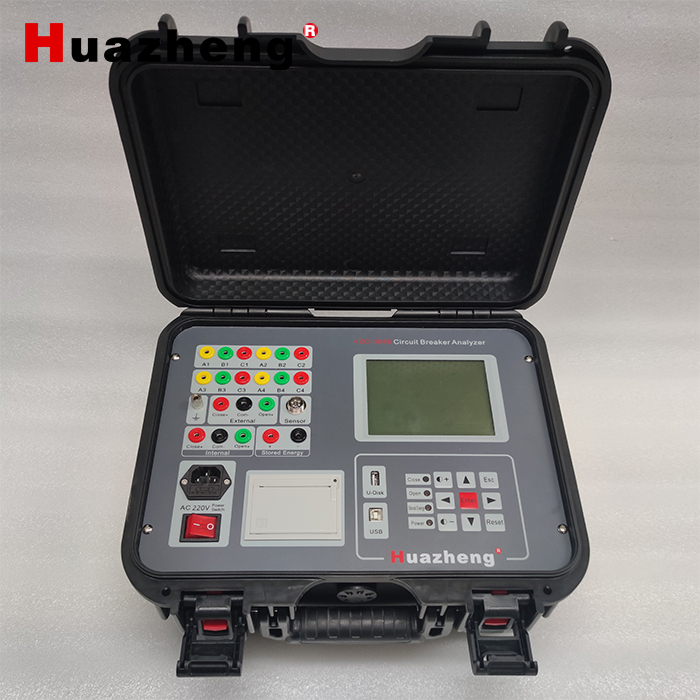![]() Email:sales04@bdhuazheng.com
Email:sales04@bdhuazheng.com
![]() Cellphone/ wechat/Whatsapp /Skype: +86 18330222302
Cellphone/ wechat/Whatsapp /Skype: +86 18330222302
The circuit breaker characteristic tester is a key equipment specifically designed to test the mechanical and electrical performance of high-voltage circuit breakers. Its application scenarios cover the full lifecycle management of power equipment. The following are typical application scenarios and specific analysis:
1. Manufacturing and factory inspection of circuit breakers
Core application: Conduct 100% full inspection or sampling testing on circuit breaker production lines to ensure that products comply with standards such as GB/T 1984 and IEC 62271.
Key test items:
Opening/closing time: Verify the response speed of the circuit breaker's action (such as closing time ≤ 50ms ± 10%).
Opening/closing speed: Detect the speed curve of the contact movement to prevent excessive arcing time caused by mechanism jamming.
Synchronization: Three phase action time difference (required to be ≤ 2ms), to avoid current deviation or uneven mechanical stress.
Example devices: Vacuum circuit breakers, SF6 circuit breakers, circuit breaker modules in GIS composite appliances.
2. Equipment installation and commissioning before operation
Application scenario: In the construction or renovation of substations, the installation of circuit breakers requires operational verification.
Key tasks:
Mechanical parameter calibration: Adjust the energy storage pressure of the spring operating mechanism or hydraulic mechanism to ensure that the opening and closing speed meets the standard.
Electrical circuit inspection: Test the waveform of the opening/closing coil current, and investigate whether there is a short circuit between coil turns or poor contact in the control circuit.
Anti bounce function verification: Simulate continuous opening and closing operations to confirm the effectiveness of the anti bounce device (preventing contact welding).
3. Regular preventive maintenance (status check)
Periodic inspection: Conduct annual or quarterly inspections in accordance with the regulations of the power industry (such as DL/T 596) to monitor the performance degradation of circuit breakers.
Typical problem diagnosis:
Institutional aging: Spring fatigue and insufficient lubrication lead to prolonged opening time (such as increasing from 45ms to 60ms).
Contact wear: Analyze the change in contact overtravel through the travel time curve and predict the remaining life.
Bounce abnormality: The bounce time of the vacuum circuit breaker contacts exceeds the standard (requirement ≤ 2ms), which may cause overvoltage.
4. Fault diagnosis and repair verification
Abnormal scenario: When the circuit breaker experiences faults such as refusal to operate, misoperation, or delayed operation, it is necessary to locate the root cause of the problem through testing.
Typical analysis:
Mechanical jamming: When the speed curve shows a "plateau" during the opening process, it indicates that the transmission rod is deformed or the bearing is corroded.
Coil fault: Abnormal current waveform of the opening coil (such as a decrease in peak current) indicates a short circuit between coil turns.
Auxiliary contact failure: Through action timing analysis, it was found that the switching of auxiliary contacts was delayed, resulting in the loss of protection signals.
After repair retesting: After replacing the operating mechanism or contact, it is necessary to retest the characteristic parameters to ensure the restoration of design performance.
Huazheng Electric HZC-3980 Circuit Breaker Analyzer
